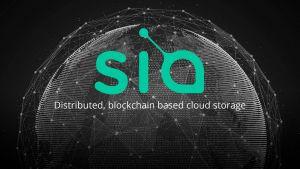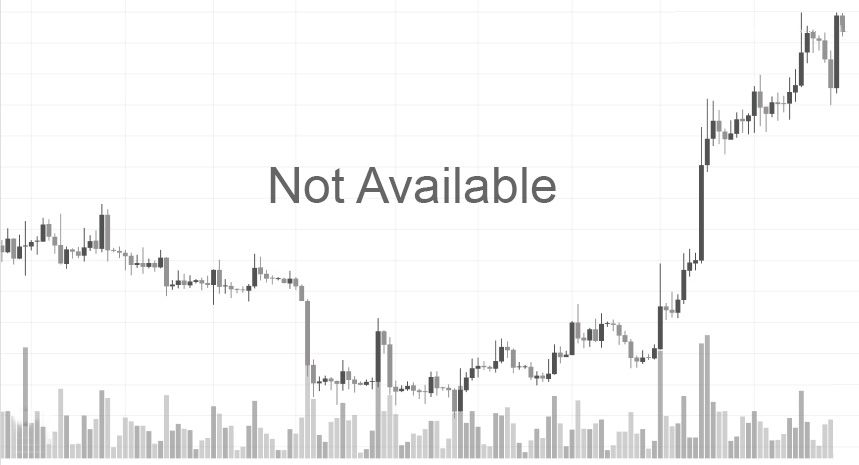Sia is a decentralized cloud storage platform running on the blockchain. The platform allows for encrypted storage of data on the cloud, with the blockchain ledger serving to verify transactions, contracts and stored assets.

The Sia project started out as a cloud storage solution which implements blockchain technology and offers high-level decentralization. It is built around a P2P storage ecosystem which allows its users to rent out their hard drive space to others or store their data on someone else’s storage resources. In order to support the payment infrastructure for these operations, the platform uses Siacoin as the cryptocurrency which is used to pay for the transactions taking place on the network.
Sia platform is also a home to another digital asset in form of the siafund token. This token is used to give its holder the right to receive a portion of siacoins which are exchanged as part of the transaction whenever a contract on storage is executed on the Sia platform. Its aim is to have the holders focus on bringing new users to the network and improving the storage platform itself as the number of siacoins they receive depends on the value of contracted transactions. The number of siafunds is limited to 10,000 and they are indivisible.
Sia was designed in response to what its creators perceived as shortcomings of the dominant centralized cloud storage providers such as DropBox, Google Drive, Amazon Cloud, Microsoft Azure and others. Centralization of the storage services on these platforms is seen as their Achilles’ heel, as their architecture has components whose failures can prevent an entire system from functioning properly. At the same time, cloud storage solutions which do not use blockchain host large amounts of unencrypted data which can be exposed to privacy breaches and manipulation by the parties seeking to profit from it. In addition to this, Sia seeks to reduce the storage fees and the waste of available but unused storage capacities the users can offer to each other by renting their spare hard drive space.
Centralized Cloud Storage Has Problems Sia Aims to Solve
The Sia’s business and technological model is supposed to create a global blockchain-powered storage server which will not be run by any single authority with the potential to jeopardize the free circulation of data in the cloud. In 2017, a hacking attack targeting the Equifax credit reporting agency in the US exposed sensitive personal information on more 145 million Americans, including the details of their social security and driver license numbers, birthdays and addresses. In the same year, Verizon suffered a similar data breach attack which led to the loss of information on 14 million of its customers.
While not being the only root cause for these attacks, centralized storage of data in a single location makes these data conglomerates particularly vulnerable to breaches. In the case of Verizon, the data storage business was outsourced to Nice Systems, a reportedly renowned provider of storage services in numerous countries. Yet, despite its references and technical resources, the data stored at this company’s facility easily made it more susceptible of becoming asingle point of failure (SPOF), meaning that making a single breach in its defenses can create the same domino-like effect for other components.
Not only intentional attacks pose a danger to these services. In 2017, Amazon’s S3 cloud computing web service was exposed to a simple human coding error which brought down several big-name websites such as Medium, Business Insider, and Giphy for several hours.
Another issue the Sia platform aims to change is the potential for the data stored in the cloud to be abused and misused by the parties which provide infrastructure for it. Centralization of big data the large companies such as Google and Facebook have control over allowed them to make profits from it or endanger them due to sheer negligence. Media analytics company Deep Roots Analytics used the Amazon cloud server to store information about as much as 61% of the US population without password protection for almost two weeks. These information included names, email and home addresses, telephone numbers, voter ID numbers etc. Despite all of these issues, all centralized cloud storage companies are in a position to charge premium fees for their services, which is another issue which the team behind Sia aims to resolve and provide an alternative to.
Sia Wants To Be a Secure and Affordable Storage Alternative
The areas in which Sia plans to challenge traditional cloud storage providers are related to privacy, affordability and security. For starters, all data stored on the Sia platform undergoes encryption. In addition to this, data is put behind a private key which restricts access only to the rightful owner or a person properly authorized by him or her. This means that Sia does not allow either its personnel or any third party to gain unauthorized access to the data stored on its servers, unlike what it is the current practice among the centralized cloud storage providers.
As a decentralized network, Sia platform does away with centralization by breaking apart the users’ files and distributing them across more than one node. If a node, theoretically, wants to access a stored file for any reason, it will be prevented from doing so by the private key only the user has access to. Even in the case that such a node manages to acquire this key by any means, it will be left with an access to only a portion of the file which is hardly of any use. Distribution of files among multiple nodes arguably reduces the vulnerability of centralized storage as a single point of failure and secures uptime which may compete with what the centralized storage providers can offer.
Another advantage of decentralized storage has to do with the closer proximity to the server which allows for faster access to the data. This refers both to the data which are stored on a website, or serve as recoverable files which are stored on hard drives of any user willing to offer their capacity. Decentralized cloud storage has no need for numerous physical facilities for holding data. In this manner, it can bring down the storage fees that would otherwise go for the maintenance of the staffing at centralized facilities. With the help of its blockchain, Sia aims to set up a storage marketplace in which the providers in form of storage space renters can compete for users with a wide array of available services. Paired with lower fees, this approach is supposed to make the storage pricing more flexible for both the renters and the end users who may be dissatisfied with being offered only lump-sum cloud storage packages.

How Does Sia Platform Operate?
In order to make this possible, Sia platform had to come up with specific architecture that will support the utilization of spare HDD resources of its users with the help of a P2P storage system. This is supported by having the storage space providers on the platform play the role of the “hosts” on the network and their clients as the “users”. In exchange for Siacoins, the clients can lease storage capacities from the hosts who are free to determine their price for it. Together with the hosts, they can also set out procedures for correcting issues such as the loss of stored data.
In the meantime, the hosts are the only party on the network in charge of promoting their available storage resources and the level of the quality of the service they provide. They are also within the rights to refuse to rent storage to a particular client, if they consider the data to be too sensitive, ethnically unacceptable or downright illegal.
In order to balance things out between the interests of the two main groups of users on its network, the clients who make use of the available storage space can protect their files by having them split and copied between various hosts. This helps them protect their availability and safety in case one host denies them access to their files or loses it unintentionally. Users can also pay their hosts beyond the regular storage fees in order to secure having preferential treatment, such as being provided with faster upload services or enjoying a favored status when their storage requests are being processed.
File Contracts Keep the Sia Network Going
To makes lives of both groups of users on the Sia platform easier, the clients and storage providers have been given an option to draft individual contracts which set down the corrective measures to be taken against the hosts which intentionally deny access to data, or fail to provide the evidence of its proper storage. These file contracts may as well regulate all other technical and business aspects of the storage use on the Sia network.
The file contracts remain valid for as long as the data are kept in storage. The documents regulating this arrangement are stored on the Sia blockchain’s public ledger. In order to ensure that all parties stick to their part of the agreement, the contracts are made immutable and verifiable as soon as they become part of the Sia platform. As such, these contracts also serve to improve the general level of security on the Sia platform, as they set out the length of contacts, the manner in which payments are to be made and the management of evidence on the proper handling of stored data.
What the Sia ecosystem aims to achieve here is to maintain this additional level of security at no expense of the flexibility of entering file contracts. In other words, the contractual parties are free to determine the level of service they provide or use. For instance, some clients may have a limited budget, making them more likely to go after the storage providers that focus on affordable storage as opposed to offering advanced security.
Siacoins are at the heart of the transactional system on the Sia network. Users who want to avail themselves of available storage space upload an agreed amount of Siacoins and make it a part of the contract. The coins provide the basis for the payment balance from which a certain amount is deduced and sent to the storage provider whenever a file is uploaded for the storage. If users do not use up all of their available storage resources in line with the contract, the remaining funds are refunded to their wallets.
What is Proof of Storage
In order to minimize the risk of frauds, Sia network has implemented a mechanism called proof of storage. Based on it, the hosts are obliged to give evidence of having provided the storage on the Sia network as a precondition to receiving compensation in Siacoins. This evidence needs to be supplied within the predefined time intervals which are set out under the file contracts. Inability to provide the proof of provided storage within a set “deadline” prevents the payment from being sent to a valid proof address and the host in question may also receive penalties for this type of behavior. Repeated failure to provide proofs of storage type may lead to the contract termination.
Siacoin Availability and Distribution
Siacoin were not offered as part of an ICO. Instead, the funds in the amount of $1.25 million were raised by the Sia team from the independent sources. In November 2018, the coin’s market cap stood at the value of USD 227 million. The currency has reached its all-time high in early 2018, with the market cap going as high as three billion USD.
Siacoins have an unlimited supply, with more than 37 billion of them being in circulation in November 2018. The coin was launched after the mining of the genesis block, with the developers handling the first 100 blocks for the reward of 300,000 Siacoins. Sia team also introduced their own ASIC miner for Siacoin named Obelisk. In October 2018, a hard fork for the platform was approved with the goal to allow only the miners armed with Obelisk hardware to mine Siacoins.
Siacoins are available for trading on cryptocurrency exchanges such as Bittrex and Binance.
The Sia Team
Sia storage project was launched in June 2015. It was devised by a team of developers from the Sia’s mother company Nebulous which is headquartered in Boston, Massachusetts, USA. The leading person behind the project is the company’s CEO David Vorick who led the development of the Sia Core platform. In addition to Vorick, the final design of the Sia platform resulted from the efforts of its programmers Luke Champine and Johnathan Howel. In 2017 Nebulous launched its Obelisk subsidiary which was tasked with manufacturing ASIC mining hardware.
